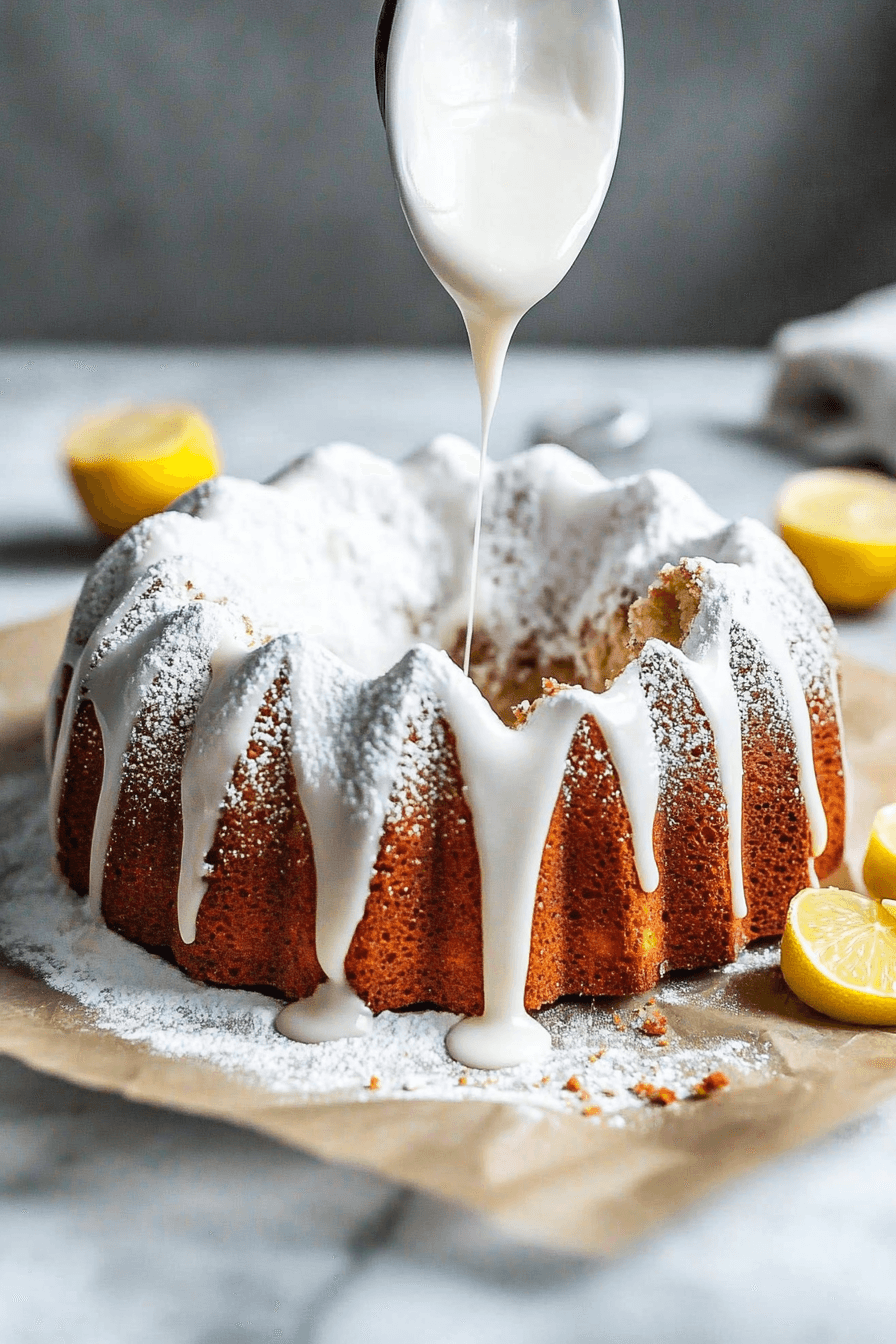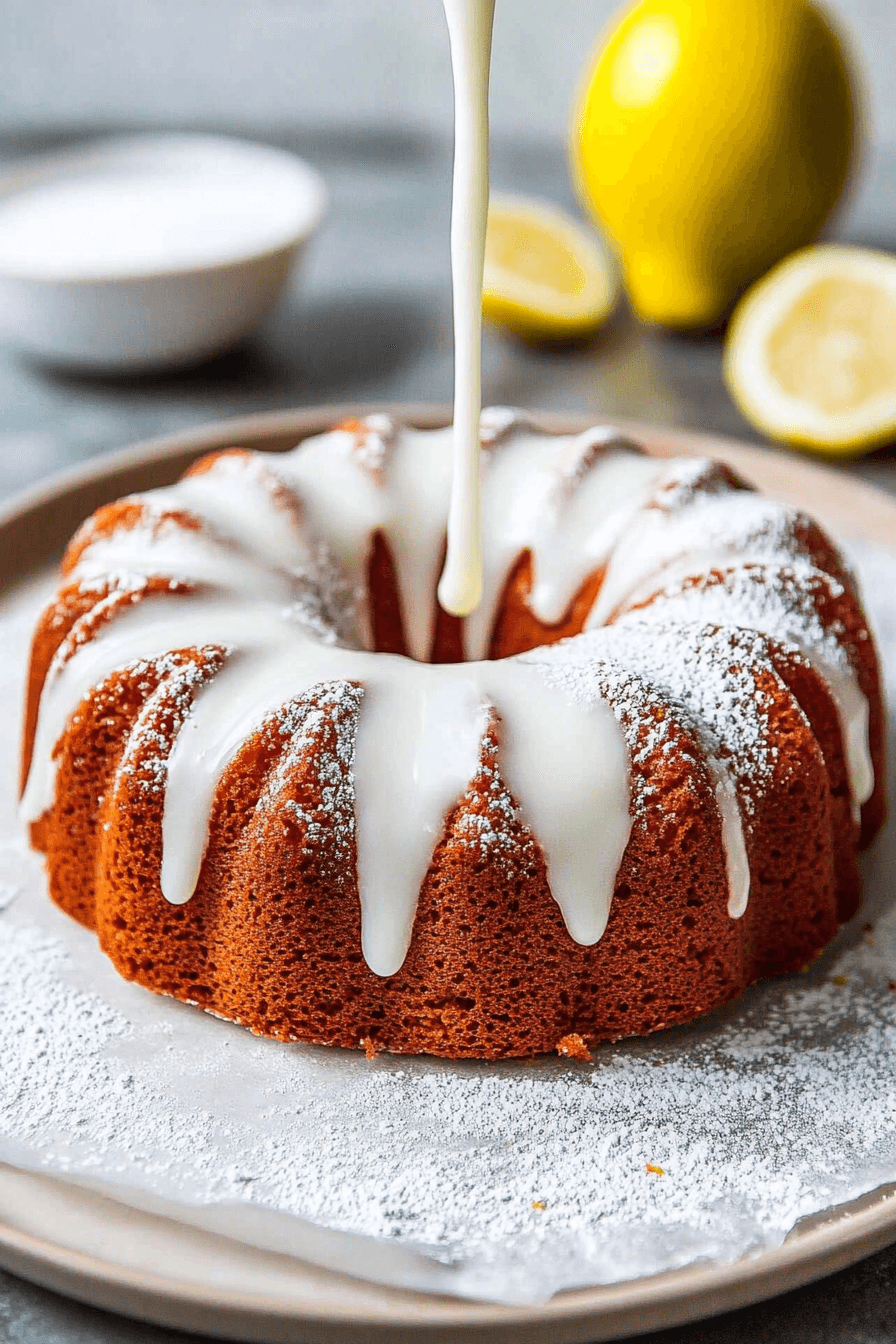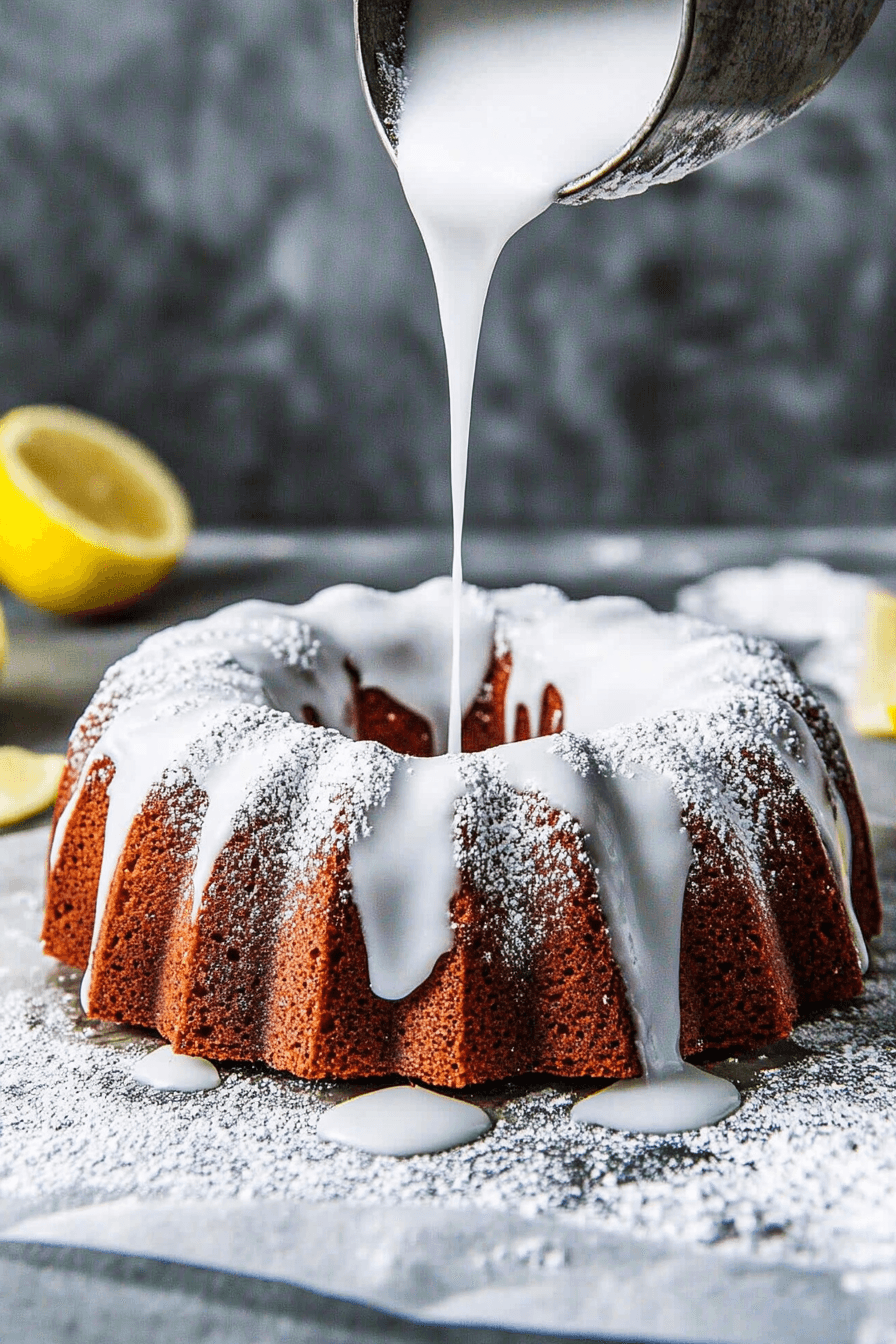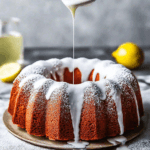Introduction to Powdered Sugar Glaze Icing
Welcome to Valentina Lewis’s blog, where cooking becomes a delightful journey, just like our focus today: powdered sugar glaze icing. This simple and versatile glaze, known for its sweet finish, can top off your baked goods, from muffins to cookies, with a touch that resonates with simplicity and joy. It combines the richness of powdered sugar, a hint of liquid, and a dash of flavoring like vanilla, creating a sugary sheen that’s irresistibly vegan and gluten-free. Whether you’re a busy parent or a student sneaking in some baking time, this glaze is your easy, quick go-to for adding sweetness.
Benefits and Advantages of Powdered Sugar Glaze Icing
The powdered sugar glaze icing shines for its simplicity and adaptability, appealing notably to various dietary needs. Its preparation is straightforward and requires minimal ingredients, making it accessible to even novice cooks. As opposed to other icings or frostings, this glaze holds a delightful lightness, keeping your baked creations from becoming overly rich. Additionally, its vegan-friendly nature means it’s inclusive of different dietary preferences, and it’s naturally gluten-free, catering to health-conscious individuals. Perfect for transforming everyday treats into something special, this glaze effortlessly adds a personalized touch to cakes and pastries.

Ingredients Overview
Essential Ingredients for powdered sugar glaze icing
A delectable powdered sugar glaze icing begins with a few simple ingredients that collectively create a flavorful, sweet topping. Here’s a detailed list of essential ingredients you will need:
- Powdered sugar (confectioners’ sugar): 2 cups; ensures a smooth and blendable base for the glaze.
- Liquid (milk, water, or juice): 3-4 tablespoons; helps achieve the desired consistency. For vegan or lactose-intolerant bakers, opt for a non-dairy milk like almond or oat milk.
- Vanilla extract: 1 teaspoon; adds a subtle, fragrant flavor.
For those who prefer a vegan option, use plant-based milk instead of cow’s milk. If you are following a gluten-free diet, rest assured that this simple glaze is naturally gluten-free.
Dietary Substitutions to Customize Your powdered sugar glaze icing
To suit various dietary requirements or ingredient availability, consider these substitutions when preparing your powdered sugar glaze icing:
- Diabetic-friendly: Use a sugar substitute like erythritol in place of regular powdered sugar.
- Flavor variations: Use different extracts such as almond, maple, or lemon for unique flavors. Zests of citrus fruits like orange or lemon also work well.
- Non-dairy options: Replace milk with almond milk, coconut milk, or soy milk to make the recipe vegan.
- Juice: For a refreshing twist, use orange or lemon juice as the liquid component for a citric touch.
These adaptations not only cater to individual health needs but also open the door for delightful experimentation in flavor profiles.
How to Prepare the Perfect powdered sugar glaze icing: Step-by-Step Guide
Creating the perfect powdered sugar glaze icing is straightforward, making it an ideal choice for all levels of home bakers. Follow this comprehensive step-by-step guide to achieve an impeccable glaze.
First Step: Begin by sifting 2 cups of powdered sugar into a medium-sized mixing bowl. Sifting eliminates lumps, ensuring a smooth, lump-free glaze.
Second Step: Gradually add 3 tablespoons of your chosen liquid (milk, water, or juice) to the bowl. As you pour, continuously stir the mixture using a whisk or a fork.
Third Step: Incorporate 1 teaspoon of vanilla extract into the mix. The vanilla enhances the sweetness and adds depth to the flavor.
Fourth Step: Stir the mixture until it becomes smooth with a uniform consistency. If the glaze appears too thick, add additional liquid one teaspoon at a time. Ensure each addition is well-mixed before proceeding.
Fifth Step: Adjust the consistency based on your intended use. A thinner glaze is ideal for drizzling, while a thicker consistency suits spreading.
Sixth Step: Test the glaze’s readiness by lifting the whisk. It should drizzle smoothly back into the bowl without clumping.
Seventh Step: Use the glaze immediately to coat your baked goods. If you need to delay application, give it a quick stir to restore the smooth texture before use.
Adaptation Suggestions: For flavor variations, try adding zests or switching out vanilla for another extract of your choice. Experiment with juices to find exciting new flavors, keeping in mind any dietary adjustments that may be necessary.
Following these steps ensures you create a powdered sugar glaze icing that not only enhances the sweetness of your baked items but also adds a beautiful glossy finish. Whether for cakes, cookies, or bread, this glaze will no doubt become a cherished addition to your baking repertoire.

Mastering powdered sugar glaze icing: Advanced Tips and Variations
Creating the perfect powdered sugar glaze icing becomes an art when you add advanced techniques and try out delightful variations. These will help you personalize your dessert, making each experience unique and delightful. First, let’s explore some tips to ensure your glaze shines every time you prepare it.
Ensuring the Right Consistency
The key to an impeccable powdered sugar glaze icing lies in achieving the right consistency. Begin by adhering to the classic ratio of 2 cups of powdered sugar to 3-4 tablespoons of liquid. If you desire a thicker glaze for spreading, gradually add more powdered sugar, one tablespoon at a time, while stirring continuously. Should you need a thinner drizzle, incrementally introduce additional liquid, such as milk or water, in small, controlled amounts to reach the perfect texture.
Flavors and Extracts
While vanilla is the staple flavor, you can experiment with a vast world of extracts to enhance your glaze. Almond, coconut, and lemon extracts are popular choices that impart distinct character to your icing. For those seeking a fruity twist, try incorporating fresh citrus zest or a splash of juice into the mixture for a vibrant kick. Moreover, a small amount of maple or caramel can add warmth and richness.
Color Customization
Visual appeal is crucial when presenting your baked goods. A touch of food coloring can transform any glaze to align with themes or personal preferences. For instance, consider using pastel colors for Easter treats or bold, fiery hues for a festive Halloween display. Always start with a small drop of color, mixing thoroughly and adjusting as needed.
Textural Additions
For those interested in adding depth and interest to the glaze, finely ground nuts or a hint of desiccated coconut can offer subtle texture. These additions can enhance the flavor profile and contribute to a more layered tasting experience, making your dessert not only a feast for the eyes but an explosion of textures on the palate.
Specialty Variations
- Chocolate Glaze: Mix cocoa powder into the powdered sugar for a deliciously rich, chocolate-flavored glaze. Adjust the sweetness by balancing with a touch of salt or bittersweet cocoa powder.
- Spiced Glaze: Introduce a pinch of cinnamon, nutmeg, or clove to evoke a warm, aromatic tone, perfect for autumnal or holiday treats.
- Wine Infusion: Replace some or all of the liquid with a sweet wine for an adult twist on classic pastries.
Remember, experimenting with different flavorings and colors is part of the fun in the kitchen, allowing you to impart a personal touch to your culinary creations.
How to Store powdered sugar glaze icing: Best Practices
Proper storage of powdered sugar glaze icing ensures it remains usable for future dessert decorating endeavors, saving time and reducing waste. Here’s how to best maintain your glaze’s quality.
Room Temperature Storage
Given its high sugar content, powdered sugar glaze icing can be safely stored at room temperature for a few days. Transfer it to an airtight container to prevent it from drying out or absorbing odors from other foods. Leaving it at room temperature also helps avoid any changes in consistency that cooling might cause.
When Refrigeration is Necessary
While refrigeration isn’t generally required, in environments with high humidity or ambient heat, storing your icing in the fridge can prevent it from becoming too soft or runny. Ensure it’s sealed tightly to protect against odors and condensation, which might alter its texture. Before use, allow the glaze to return to room temperature, giving it a good stir or whisk to restore its smoothness.
Freezing Glaze
If you need to store the glaze for an extended period, freezing is a viable option. Pour the prepared glaze into a freezer-safe container, leaving some space for expansion. When you’re ready to use the glaze, let it thaw in the refrigerator first, then bring it to room temperature and stir to achieve the desired consistency.
By following these storage tips, your glaze will be ready whenever you are inspired to create kitchen masterpieces. To test your skills, why not experiment with donuts or other delicious desserts? These ensure your baking remains a joyful and spontaneous pursuit.

Nutritional Value of powdered sugar glaze icing
Understanding the nutritional content of powdered sugar glaze icing is essential for those who are diet-conscious or managing specific nutritional needs. This simple and sweet icing, while a delicious addition to many baked goods, primarily consists of sugar and a liquid, usually milk, water, or juice. Here’s a breakdown of the typical nutritional values you might encounter in a standard serving.
Caloric Content and Macronutrients
| Nutrient | Amount per Serving (1 tablespoon) |
|---|---|
| Calories | 60 |
| Total Fat | 0g |
| Cholesterol | 0mg |
| Sodium | 0mg |
| Total Carbohydrates | 15g |
| Dietary Fiber | 0g |
| Protein | 0g |
Key Nutritional Insights
- Sugar Content: The primary component is carbohydrates, specifically sugars, which contribute to both the sweetness and caloric content.
- Fat-Free: Traditional powdered sugar glaze is free from fats unless butter or other fats are intentionally added for additional flavor or texture.
- Customization: Those managing calorie intake can alter serving sizes or choose low-calorie sweeteners to reduce sugar content.
If you’re someone who enjoys experimenting with flavors, try incorporating various extracts or juices to add a different taste profile without significantly altering the nutritional values. For example, using lemon juice instead of milk can provide a refreshing twist. Similarly, substituting regular powdered sugar with a sugar-free variant might benefit those looking to minimize sugar intake. For more delightful bakery experiments, you might want to explore recipes like maple glazed donuts for days when you’re craving a richer experience.
FAQs: Frequently Asked Questions About powdered sugar glaze icing
1. Does powdered sugar glaze harden?
Yes, powdered sugar glaze typically hardens as it dries. The high sugar content means it will set and create a slightly firm texture that’s perfect for drizzling over cakes, cookies, or other baked goods. However, for a slightly softer finish, adjust the ratio of liquid to sugar or add optional ingredients such as butter to keep it more pliable after setting.
2. Can I make powdered sugar glaze ahead of time?
Absolutely! You can prepare powdered sugar glaze in advance and store it for later use. This is especially convenient for busy parents or professionals who want to save time during the week. Store the glaze in an airtight container at room temperature for 2-3 days. If it begins to harden, stir in a small amount of liquid to return it to the desired consistency before using.
3. How should I store baked goods with powdered sugar glaze?
You can store glazed baked goods at room temperature in an airtight container. This prevents the glaze from absorbing too much moisture and dissolving into the baked goods. While the glaze itself doesn’t require refrigeration, the baked goods might, depending on their ingredients, particularly if they contain perishable fillings or toppings. See [this guide](https://www.britannica.com/topic/confectioners-sugar) for more detailed storage tips.
4. What can I do if my powdered sugar glaze becomes too runny?
If your glaze is too runny, simply whisk in more powdered sugar until you reach the desired thickness. Begin by adding 1 tablespoon at a time to prevent over-thickening. On the other hand, if the glaze is too thick, slowly add a few drips of liquid, such as milk, water, or juice, while continually stirring until achieving the consistency you prefer. For those interested in exploring variations, the versatile world of icing offers many exciting paths.
Print
Powdered Sugar Glaze Icing: Simple and Sweet
- Total Time: 5 minutes
Description
🍰 A quick and easy powdered sugar glaze that adds a sweet, glossy finish to your favorite baked treats—ready in minutes with no cooking required! ✨
🎨 Customize it with different flavors or colors to match any dessert, and enjoy a smooth, delicious topping that sets beautifully every time! 🍩
Ingredients
Powdered sugar
Milk, water, or juice
Vanilla extract
(Optional) Butter
(Optional) Flavored extracts (lemon, orange, almond, maple)
(Optional) Citrus zest
(Optional) Food coloring
Instructions
1. Sift 2 cups of powdered sugar into a mixing bowl to prevent lumps.
2. Add 3 to 4 tablespoons of your chosen liquid (milk, water, or juice).
3. Stir the mixture with a whisk or spoon until smooth and well combined.
4. Add 1/2 teaspoon of vanilla extract or another flavoring of choice.
5. Adjust consistency by adding more liquid for a thinner glaze or more sugar for a thicker glaze.
6. If using food coloring, mix in a few drops until the desired color is achieved.
7. Use immediately by drizzling or spreading over baked goods.
8. Let the glaze set for 20 to 30 minutes before serving.
9. Store any leftover glaze at room temperature in an airtight container for a few days.
10. Stir well before reuse, as it may thicken or crystallize over time.
Notes
Adjust the consistency of your glaze by adding liquid gradually to avoid making it too thin.
For a lump-free glaze, sift the powdered sugar before mixing with liquid.
Add different extracts, zests, or juices to customize the flavor to match your baked goods.
- Prep Time: 5
- Category: Icing
- Method: No Bake
- Cuisine: International

